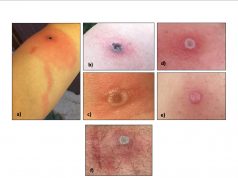In both rural and urban areas, incidence was consistently higher among Black and Hispanic versus White persons
By Elana Gotkine HealthDay Reporter
THURSDAY, May 25, 2023 (HealthDay News) — About 71 percent of cases of mpox occurred among persons residing in large central urban areas, and 95.7 percent of these cases occurred in cisgender men, according to research published in the May 26 issue of the U.S. Centers for Disease Control and Prevention Morbidity and Mortality Weekly Report.
Carla E. Zelaya, Ph.D., from the CDC Mpox Emergency Response Team, and colleagues describe urban-rural differences in mpox incidence (cases per 100,000 population) among persons aged 15 to 64 years by gender and race and ethnicity.
The researchers identified substantial differences in incidence by urbanicity, gender, and race and ethnicity. Seventy-one percent of cases occurred among persons residing in large central urban areas; of these, 95.7 percent were in cisgender men. In the United States, the overall incidence of mpox was 13.5; in both urban and rural areas, incidence peaked in August. Incidence in rural areas was about 4 and 11 percent of that in large central urban areas among cisgender men and women, respectively (risk ratios, 0.04 and 0.11, respectively). Incidence was consistently higher among non-Hispanic Black or African American and Hispanic or Latino persons than among non-Hispanic Whites in both urban and rural areas; the risk ratios between Black and White persons were highest in rural areas.
“The estimated higher incidence in urban areas underscores the need for services, especially in large central urban areas; however, mpox prevention, recognition, diagnosis, and treatment services are still needed in less urban and rural areas,” the authors write.
Copyright © 2023 HealthDay. All rights reserved.








